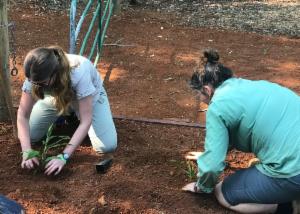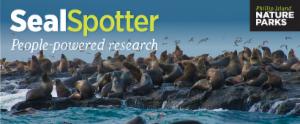Search for Pseudoceros sp. (orange) returned 2,074 results.
Refine results
Refine results
Section
- Species (1,012)
- Common Name (779)
- Site Page (131)
- Biodiversity Science project (98)
- Data resource (17)
- Support article (17)
- Data provider (12)
- Spatial layer (6)
- Institution (2)
Image available
- Yes (881)
Lifeforms
- Fish (78)
- Molluscs (66)
- Insects and Spiders (57)
- Reptiles (23)
- Birds (15)
- Fungi (6)
- Crustaceans (5)
- Amphibians (3)
- Mammals (2)
Taxonomic status
- Accepted (583)
- Heteroptypic Synonym (216)
- unreviewed (133)
- Synonym (62)
- Homotypic Synonym (7)
- unreviewedSynonym (6)
- Miscellaneous Literature (3)
- Misapplied (2)
Conservation status in Australia
- Vulnerable (12)
- Critically Endangered (9)
- Endangered (4)
- Conservation Dependent (1)
Conservation status in NSW
- Critically Endangered (4)
- Endangered (3)
- Vulnerable (2)
Conservation status in QLD
- Vulnerable (10)
- Critically Endangered (2)
- Endangered (1)
- Near Threatened (1)
Conservation status in VIC
- Endangered (12)
- Critically Endangered (5)
- Vulnerable (2)
- Extinct (1)
Conservation status in TAS
- Endangered (2)
Conservation status in SA
- Rare (4)
- Endangered (1)
- Vulnerable (1)
Conservation status in WA
- Priority 1: Poorly-known species (22)
- Priority 2: Poorly-known species (19)
- Priority 4: Rare, Near Threatened (11)
- Vulnerable (11)
- Priority 3: Poorly-known species (10)
- Endangered (7)
- Critically Endangered (6)
Conservation status in NT
- Vulnerable (3)
-
Site Page: Fungimap: putting Australian fungi on the map – Atlas of Living Australia
Posted on 29th January 2015 Fungimap is one of the largest citizen science groups in Australia and – with over 100,000 fungi records available online– is the biggest single contributor of fungi records to the Atlas of Living Australia (the Atlas). Distribution of fungi records in ALA Fungimap uses information gathered by volunteer observers across Australia, from professionals to amateurs, to map the distribution of target species of Australian fungi...
-
Biodiversity Science project: Wildlife corridors for the Scenic Rim
We developed a plan in cooperation with the Scenic Rim Regional Council following surveys for squirrel gliders in the valleys (which have less Protected Areas than ou mountainous regions). Former environment officer, Keith McCosh recommended that in addition to establishing the corridors, we also consolidate the “hubs” (localities already relatively rich in wildlife) as secure squirrel glider habitat, by enhancing altered habitats within these with food trees or nest boxes as needed, ...

-
Biodiversity Science project: HuMaIN (Human- and Machine-Intelligent Software Elements for Cost-Effective Scientific Data Digitization)
In the era of data-intensive scientific discovery, Big Data scientists in all communities spend the majority of their time and effort collecting, integrating, curating, transforming, and assessing quality before actually performing discovery analysis...

-
Biodiversity Science project: Norfolk Bat Survey
The Norfolk Bat Survey (www.batsurvey.org) was originally set up with colleagues at the British Trust for Ornithology as a bit of fun, whilst improving local knowledge and interest in bats, but has since enlisted over 800 volunteers. Volunteers sign up and borrow a passive bat-detector from one of 21 centres hosting equipment. Leaving the detector outside at three different locations a night within a 1-km square, bat calls are recorded and saved to a memory card...
-
Biodiversity Science project: SealSpotter
Citizen Scientists around the world can contribute to vital seal research from the comfort of their own homes. SealSpotter harnesses the drone (RPA – Remote Piloted Aircraft) technology we are currently using to monitor several colonies of Australian fur seals on Victoria’s offshore islands. The high resolution images captured by the drone are then uploaded to the SealSpotter portal, ready for counting...

-
Site Page: Museum volunteers help with rapid digitisation – Atlas of Living Australia
Posted on 29th March 2011 By Alexis Tindall, South Australian Museum. The Australian Museum and the South Australian Museum are exploring the use of volunteers to help digitise the museums’ collections. The museums’ specimen collections are a rich source of biological information and the project aims to unlock the information held in these collections, making it more widely accessible and […] By Alexis Tindall, South Australian Museum...
-
Site Page: ALA and the Great Eastern Ranges initiative – Atlas of Living Australia
Posted on 6th April 2011 By Lynne Sealie, Atlas of Living Australia The Atlas of Living Australia (ALA) is collaborating with the Greater Eastern Ranges Initiative (GER) to increase the use of ALA tools by GER partners in their project activities...
-
Site Page: The ALA and BIGnet – Atlas of Living Australia
Posted on 8th April 2011 By Piers Higgs, Gaia Resources BIGnet, the Bird Interest Group network, held their bi-annual meeting on Sunday, 3rd April, 2011 at Lake Parramatta Reserve in Sydney. BIGnet invited Piers Higgs, the ALA’s Citizen Science team leader, to talk to them about the Atlas of Living Australia...
-
Site Page: Simpson Desert full of life on camel trek Day 3 – Atlas of Living Australia
Posted on 5th July 2011 Camp Day 3 (July 4th 2011). Lat -23 .93926. Long 138.57945. Elev 94 m. Time 4.06 pm. By Paul Flemons, Australian Museum Weather has been fine with a cool wind – good walking conditions. Tip: Hover mouse over photo to see caption. Click on photos to see different sizes and/or make a comment on Flickr. Long day of trekking – up at 6am, breakfast 7am...
-
Site Page: Export Areas – Atlas of Living Australia
Posted on 2nd February 2012 The Export area allows you to export any area that has been defined by a user-generated mapped layer (e.g., Add to Map | Area or Import | Areas). You cannot export layers due to the licensing restrictions (which we are working on), but you can view all layers in an external application using WMS...
